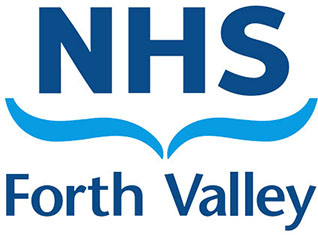Welcome to Oral and Maxillofacial (OMFS) Surgery at Forth Valley Royal Hospital. The OMFS outpatient department is located within Area 6 on the ground floor of the hospital building.
This department offers a comprehensive service relating to conditions of the face, mouth, and jaws. This can include routine and emergency assessment and treatment for common head and neck surgical conditions.
The team will see, treat and manage a range of conditions which can include facial trauma, head and neck cancer, salivary gland diseases and facial pains. The specialty is unique as it involves dual qualification in medicine and dentistry. Treatment for impacted teeth, cysts, and tumours of the jaws, as well as surgical removal and exposure of impacted teeth and management of intra-oral mucosal conditions and infections are part of the department’s scope.
This department frequently work alongside other specialists including orthodontists, oncologists, neurosurgeons, plastic surgeons and ear, nose, and throat (ENT) surgeons.
What types of treatment does this department offer
Treatments offered include mouth and skin biopsies, mouth and skin lesion removal, removal of impacted teeth (including wisdom teeth), retained roots, exposure of impacted teeth, management of jaw cysts, support for facial pain, management of facial trauma, orthognathic surgery, and the management and review of head and neck cancers amongst others.
How may my treatment be offered
Full discussion will take place with your Clinician on your consultation date. Factors such as the required treatment and your medical background can affect options but broadly speaking within the OMFS department there are 3 main options:
- Local anaesthesia
- Intravenous sedation (IV sedation)
- General anaesthesia
Anaesthesia means “loss of sensation”. Medicines that cause anaesthesia are called anaesthetics.
Anaesthetics are used during tests and surgical operations to give a numb sensation in certain areas of the body, or to induce sleep. This prevents pain and discomfort and enables a wide range of medical procedures to be carried out.
Local anaesthetics and general anaesthetics are two commonly used types of anaesthetics:
- Local anaesthesia is where a small area of the body is numbed with an injection, and you remain fully conscious – often used during minor procedures.
- General anaesthesia is where you are unconscious and unaware of the procedure – often used for bigger or more complex operations. A pre assessment is required to assess you prior to treatment.
IV Sedation can also be provided within our outpatient department, as an adjunct to local anaesthetic in certain cases. Patients who may benefit from IV Sedation, are those who experience increased dental anxiety.
Intravenous sedation is when a sedative to relax you, is injected into your bloodstream using a small plastic tube (also called a cannula) usually placed in a vein in your arm or hand.
Sedationists are trained to give the right amount of sedative, and to manage any side effects if necessary. Your sedationist will stay with you during your treatment and monitor your vital signs, such as pulse, breathing rate and oxygen levels. You will require an assessment that IV sedation is an option for you.
After treatment under IV sedation, you will need to follow instructions including being brought to your appointment by a suitable escort as you will not be able to drive following your procedure. They must stay in the waiting room for the entire procedure time and then take you home, looking after you for 24hours. You or your escort must not be responsible for the care of dependents for 24 hours.

